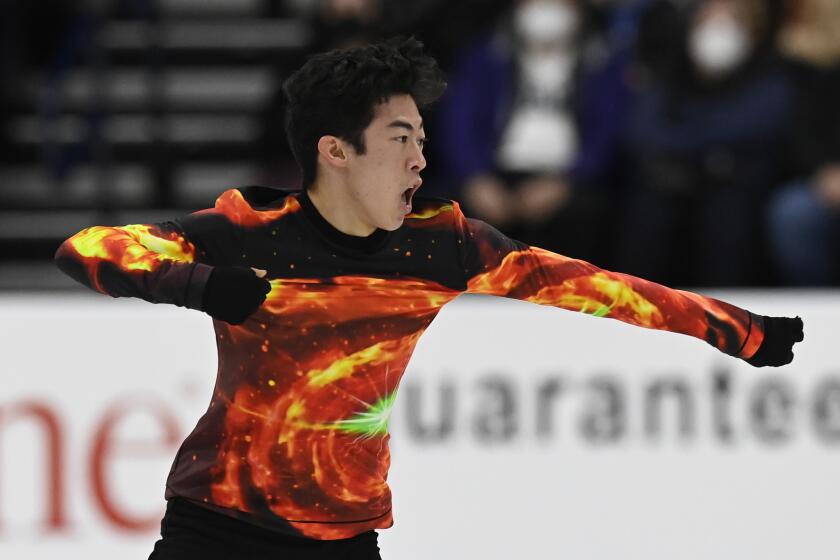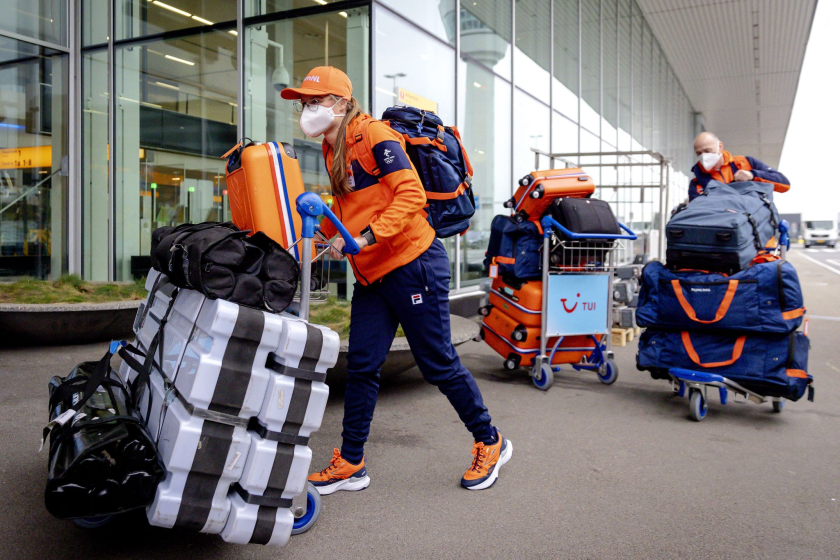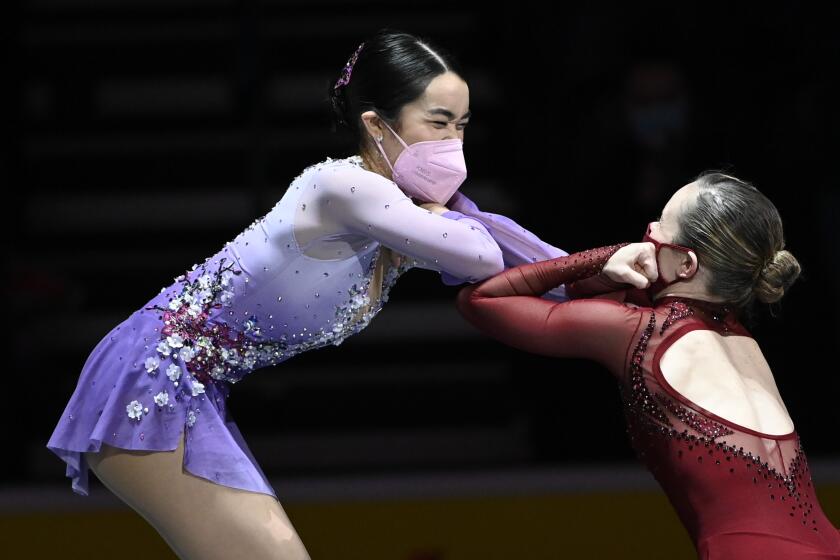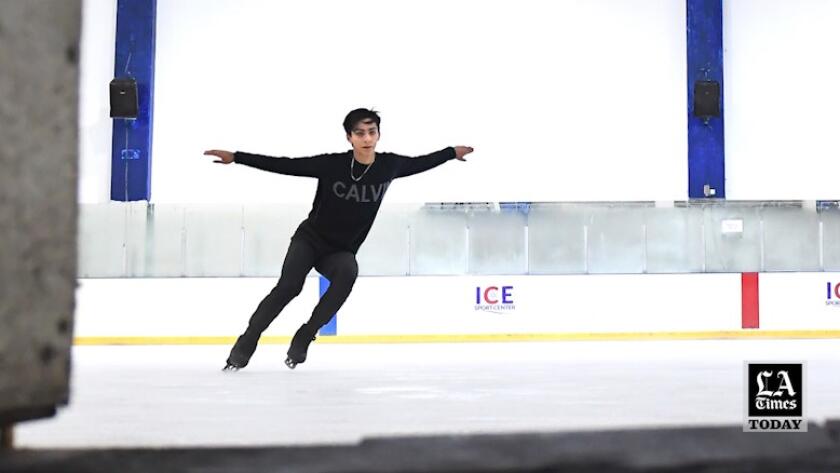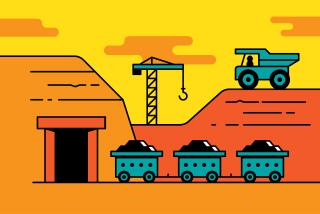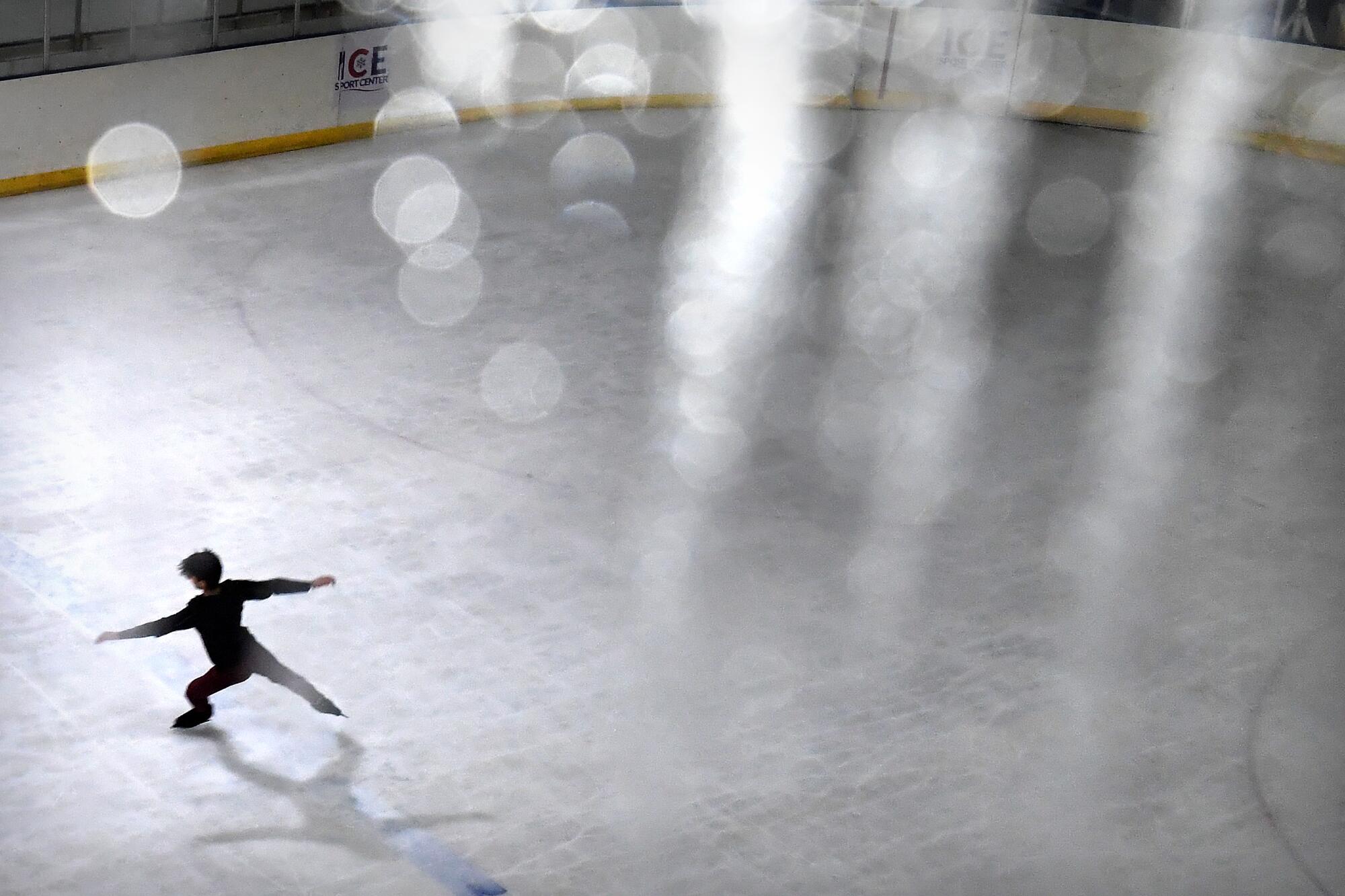
LEÓN, Mexico — Donovan Carrillo is the best ice skater in Mexican history, which is a little like being the best bartender at a temperance convention or best speaker at a school for mimes.
It’s an accomplishment but not one that’s widely understood or appreciated.
And that goes a long way toward explaining why Carrillo has been preparing for next month’s Olympics in a shopping mall, on an undersized rink tucked between a travel agency and a Japanese import store, often sharing the ice with teenagers on dates and frightened preschoolers wobbling on rented skates.
“It’s not like I go to the supermarket and everyone is asking for pictures,” Carrillo said.
In 2018, he became the first male Mexican to qualify for the International Skating Union’s world junior championships, and the next year, he became the first to land a triple axel — one of figure skating’s most difficult jumps. Since then, Carrillo has notched six top-10 finishes in major international events and added the difficult quadruple salchow to his repertoire.
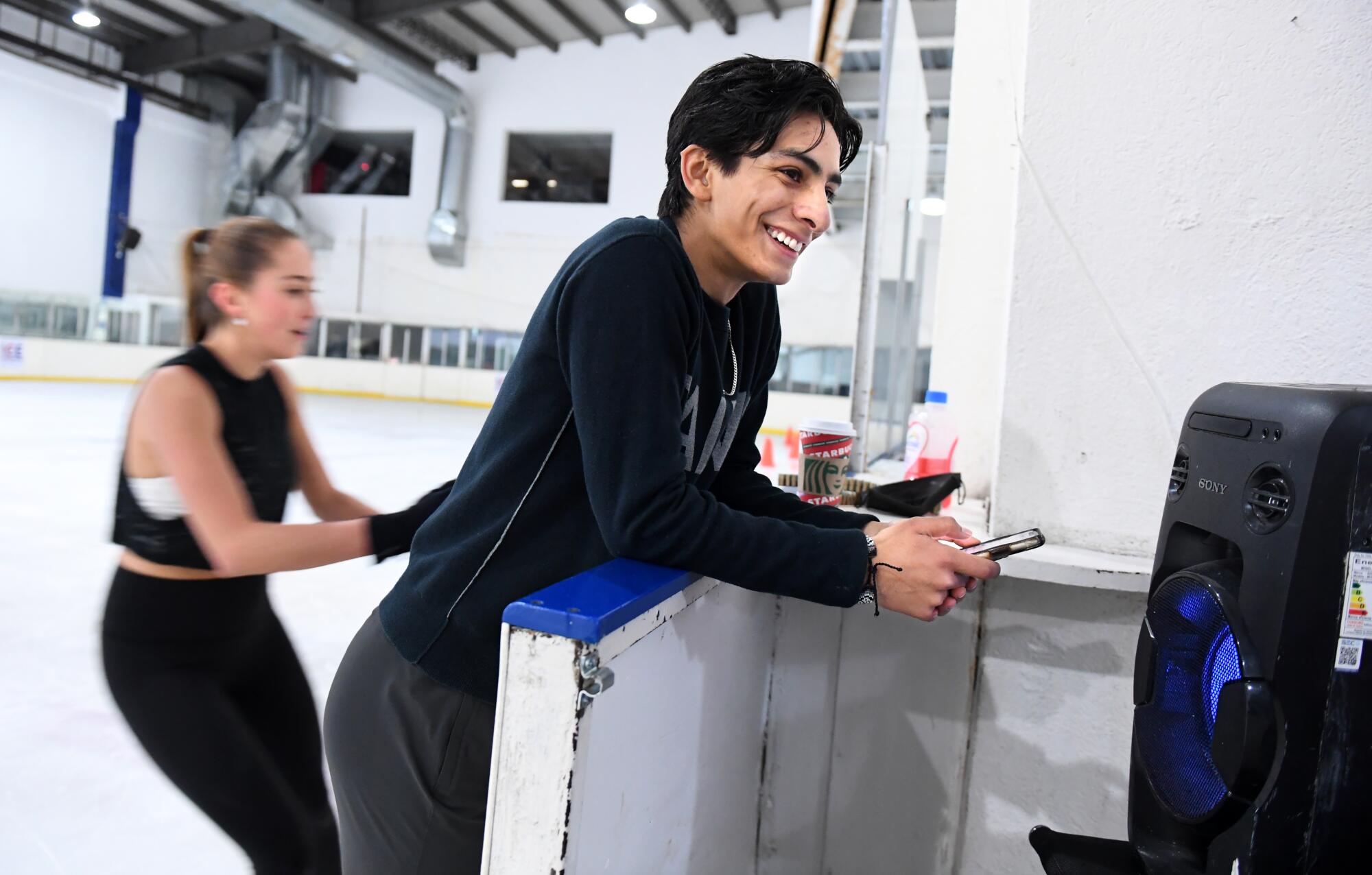
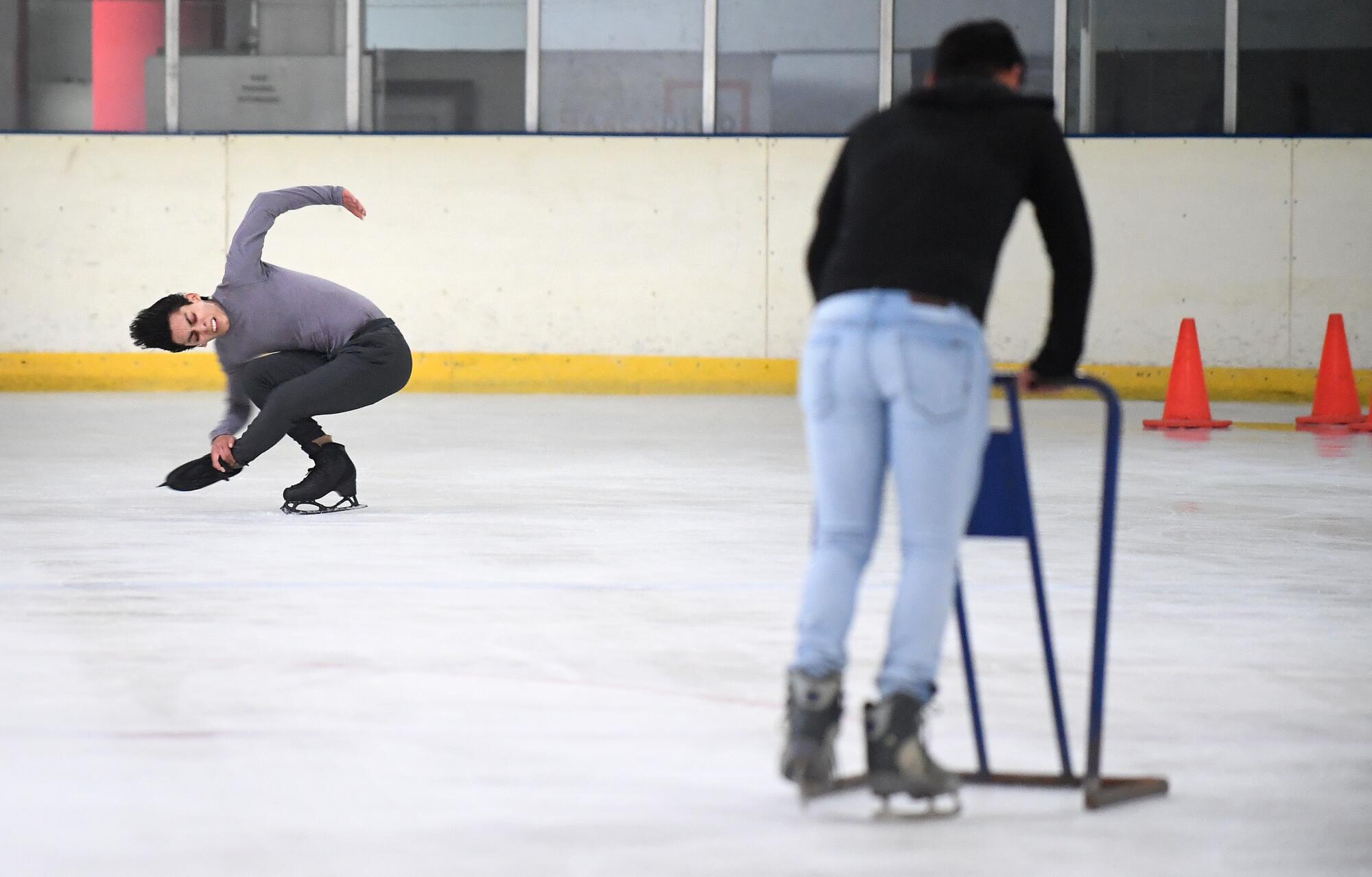
But in a country that has nearly three times as many international airports as it does skating rinks, he’s mostly unknown, even where he trains. When a visitor arrived at the rink on a recent morning and asked for Carrillo, the lone woman behind the counter responded quizzically, “¿Quién?”
All that could change next month in Beijing, where the 22-year-old Carrillo will become just the fourth Mexican figure skater — and first since 1992 — to compete in the Winter Games, the latest twist in a complicated, quixotic journey that began with an ice-fated, grade-school romance.
Jason Brown and Vincent Zhou, who finished behind runner-up Ilia Malinin, are nominated along with national champion Nathan Chen for U.S. Olympic team.
“People at the beginning were laughing at me,” he said. “But I’ve accomplished multiple things for me and for my sport and for my country. At some point, people are going to see that they were wrong.”
The Ice Sport Center, hidden in a corner of the Plaza Mayor mall, is as dark and dank as a coal mine, with a rink less than two-thirds the size of an Olympic-sized surface. Yet twice a day, Carrillo makes the 15-minute drive there from the house he shares in León with Gregorio Núñez, the only coach he has ever known, hooks a breadbox-sized speaker to his cellphone and skates to Santana’s “Black Magic Woman” and “Shake It,” the songs he will use in his 2-minute 40-second short program in Beijing.
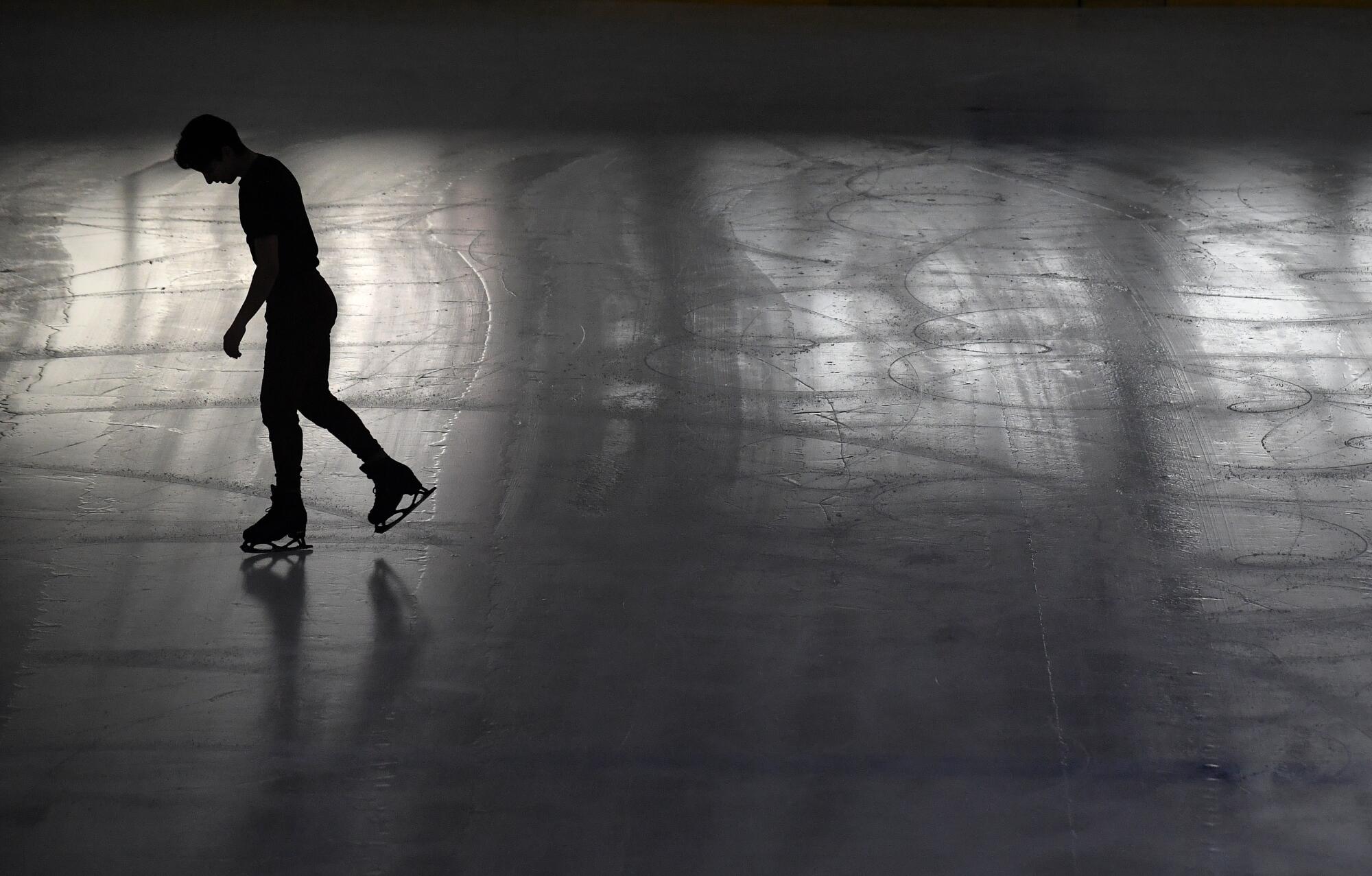
When recreational skaters join him on the soft ice, the rink’s owners make Carrillo turn the music off, leaving him to imagine it in his head. For some competitive skaters, the music is almost background noise, the GPS that guides them through a performance. For Carrillo, the music is the performance.
“Since I was little, I was always very passionate with music, feeling the voice and every sensation of the artists that they were trying to express,” said Carrillo, whose interpretations are aided by an expressive, angular face that is mostly cheekbones, accented by smoldering brown eyes and a wide, bright smile.
That smile is on constant display, even as he prepares for demanding jumps. “Sometimes, athletes are just focusing on the technique or the jumps. I try to be a little bit more on the audience, expressing myself and feeling the emotions even if the skating is not perfect,” added Carrillo, who, despite his artistry, looks frail and vulnerable on the ice, which also plays well with crowds if not judges.
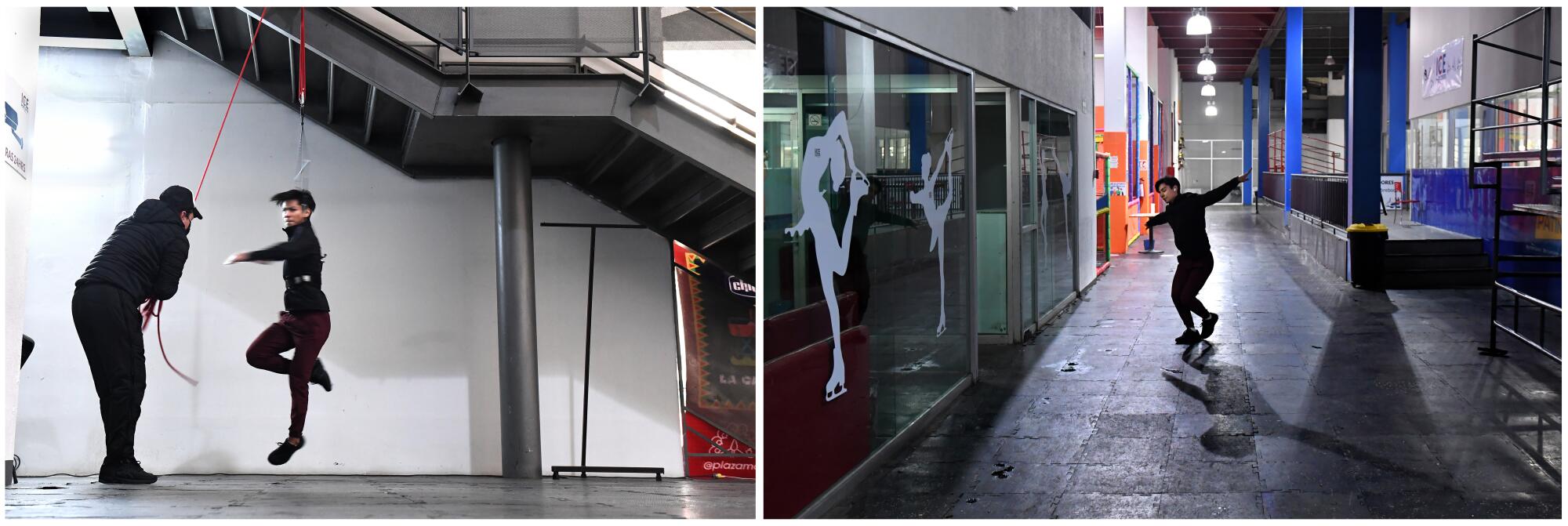
It was through the music, not his skating, that Carrillo first drew public attention in Mexico. When he skated to Juan Gabriel’s “Hasta Que Te Conocí” (“Until I Met You”) at the 2016 ISU Junior Grand Prix in Japan, video of the performance went viral at home, where it was widely interpreted as a tribute to the legendary crooner who had died just two weeks earlier. In reality, Carrillo had chosen the song nine months earlier to honor his mother, who counts it among her favorites.
Skating wasn’t Carrillo’s first love, but it was his first love that drew him to skating. His parents, both physical education teachers, encouraged their children to play sports from a young age, and Carrillo started diving and gymnastics at age 3, then later tried soccer and karate.
Winter Olympics sports often require gloves and goggles and helmets and bulky winter clothing, which makes packing for the trip a big challenge.
A movie inspired his older sister Daphne to pursue figure skating, and Carrillo, then 8, tagged along and was rewarded when his sister introduced him to a girl named Elizabeth.
“I fell in love with her,” Carrillo recalled with an embarrassed grin. “We were like boyfriend and girlfriend. We used to send letters to each other.”
To impress her, Carrillo started skating too. When Elizabeth abruptly quit a few months later, he replaced one love with another.
“I just knew this was for me,” he said. “I really feel like a fish in water.”
His family supported him, but friends thought he was joking. Guadalajara, his hometown, is the birthplace of mariachi music, of boxing champion Canelo Álvarez, of golfer Lorena Ochoa, of soccer stars Javier “Chicharito” Hernández and Andrés Guardado. The only ice there was in the margaritas.
“They were like, ‘Oh my God, how is it possible to practice this sport in a tropical climate like Mexico?’ ” he said. “They were always telling me: ‘You’re not going to do anything. You’re going to accomplish nothing. Why don’t you practice boxing or even soccer?’”
Carrillo, however, dug in harder, refusing to place limits on his dreams.
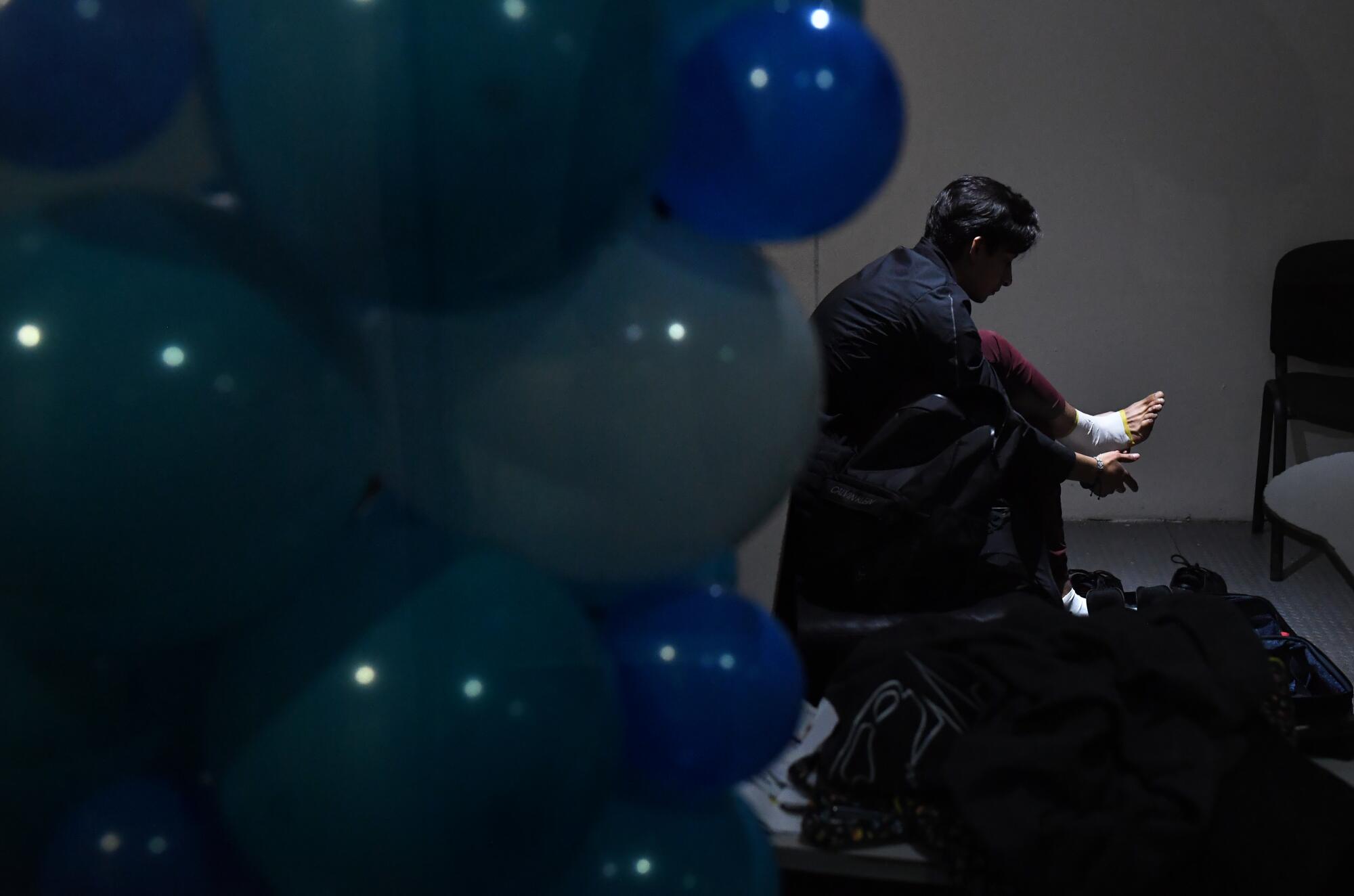
“If you don’t believe in yourself or what you’re doing, it’s hard to grow, it’s hard to develop,” he said.
Skating, it turned out, was a perfect fit. With its jumps and turns, the sport matched his personality and his lithe, graceful 5-foot-6 build. The body control and strength he developed through diving and gymnastics gave him a solid foundation for skating, while the musical interpretation provided something the other sports lacked.
As a child, he had natural rhythm and could dance to anything, from the romantic boleros of Luis Miguel to the bland pop-rock of boy bands such as the Backstreet Boys. Skating added that final element.
“I was missing the passion, the artistry,” he said. “With skating, I could use my whole package: my strength, my flexibility, my mind, my emotions.”
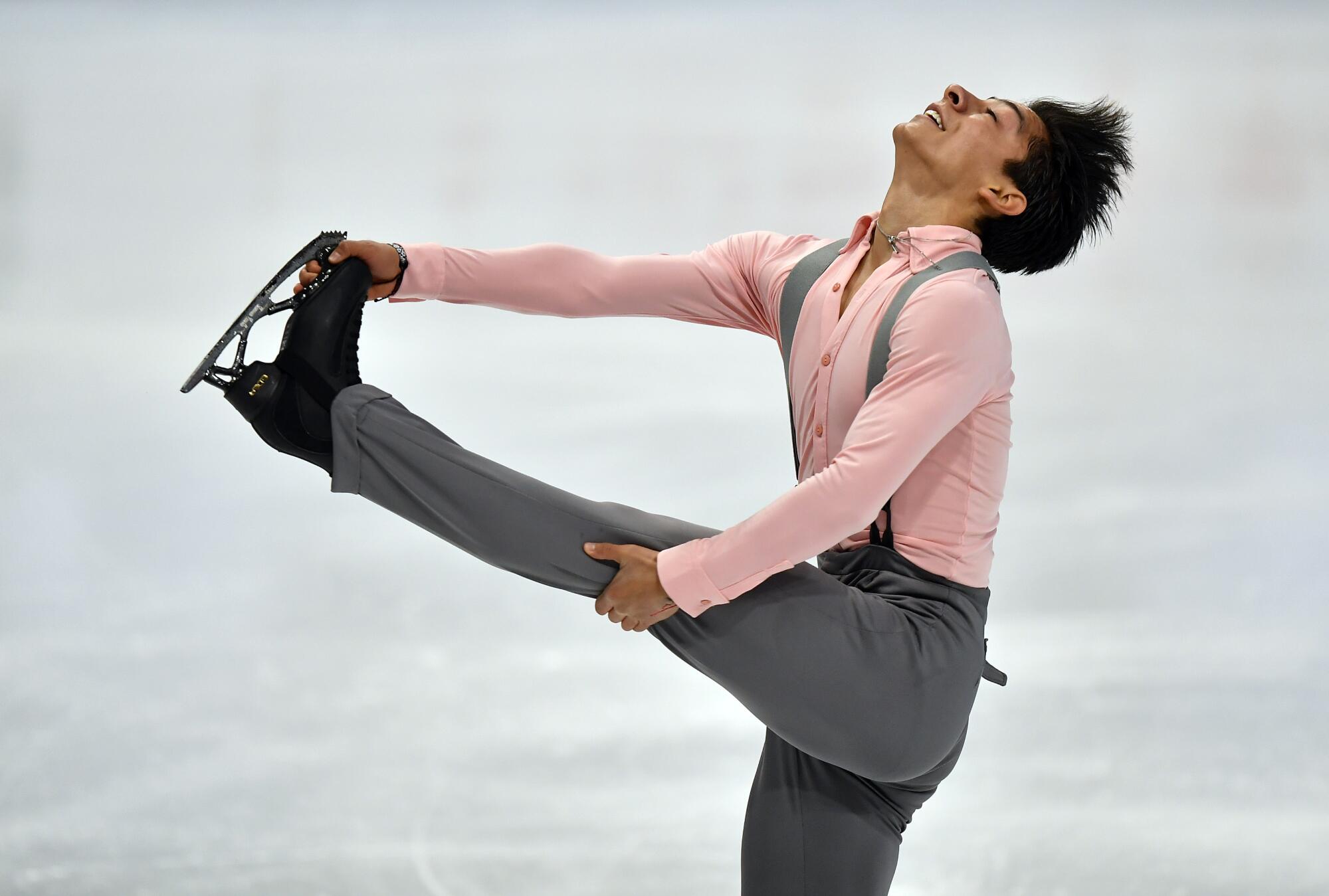
He had found his passion, but the idea that skating could take him to the world stage didn’t occur to him until the Vancouver Games in 2010.
“When I started, I was just doing it for fun,” he said. “But when I watched my first Olympics on TV, I decided to make this my dream.”
Chasing that dream would require negotiating more obstacles than a downhill skier, beginning just months before his first international competition when his practice rink in Guadalajara was shuttered, costing Núñez his job. When the coach was offered work at another rink three hours away in León, Carrillo, then 13, asked his mother whether he could relocate too, just temporarily.
Nine years later, he’s still there.
“To let him leave that early, it was very painful. But you don’t clip their wings,” said his mother, Diana Isela Suazo. “As parents, we wanted to teach our children to fly even if it pains us. And thank God that decision proved to be the right one.”
Suazo competed in gymnastics and swimming growing up, and her two oldest daughters, Daphne and Daniela, also pursued athletic careers, Daphne in skating and Daniela in diving and then shooting, in which she competed for Mexico’s national team. Yet from early on, Suazo believed her son, the second youngest of four children, was destined to outdo all of them.
“He was always a child that was confident,” she said. “Whatever he did, he wanted to do well. He wanted to be in the center of everything.”
Still, she battled depression when he left, with every visit to León ending in an emotional goodbye.
“Donovan cried and I cried. Because we didn’t want to separate,” she said. As a result, the trips became less frequent.
But if Carrillo was able to continue his education in León, finishing high school and starting college, the set-up for training was less than ideal. Most world-class skaters have a staff of coaches, nutritionists and doctors. Carrillo had Núñez — and even then shared his coach with the 80 other aspiring athletes enrolled in Núñez’s skating classes.
At the mall rink, Carrillo frequently has to dodge recreational skaters — and some of Núñez’s other students.
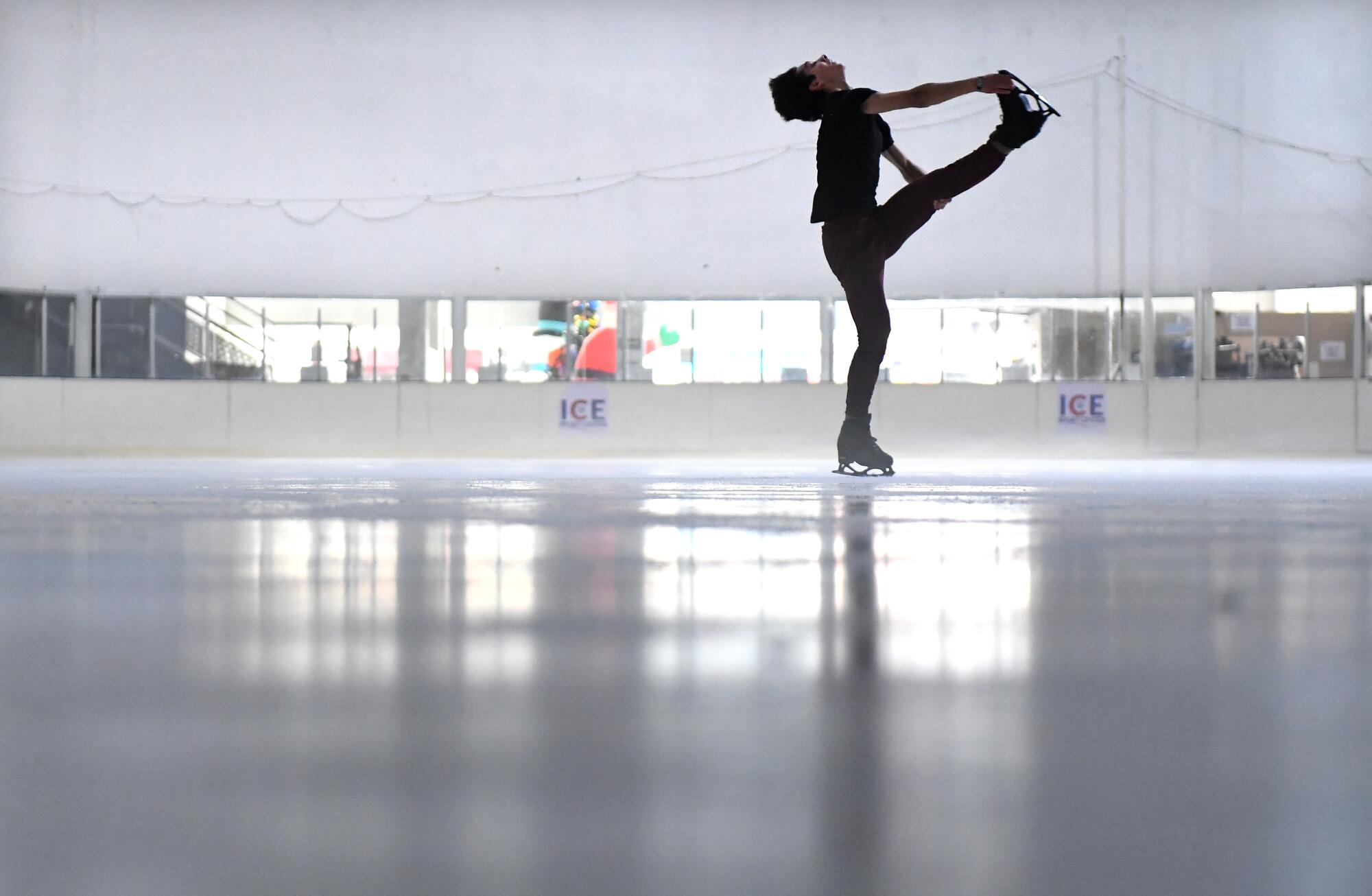
He shrugs at the inconveniences.
“It doesn’t matter if I have a very nice rink or I have this one. Because at the end of the day, if I just focus on what I don’t have, I couldn’t be able to grow as a skater,” said Carrillo, who must adjust his routines at the last minute to account for the larger rinks used in competition.
Another hurdle has been money. With ice time, equipment, coaching fees and travel expenses, figure skating is among the most expensive of Olympic sports, yet Carrillo’s first skates were bought in a street market and his second borrowed from his sister, a fact his mother hid by having the white leather and nylon boots painted black to make them look like boy’s skates.
Núñez had long mentored his prize pupil for free, but as Carrillo progressed, expenses spiraled, threatening to end Carrillo’s career before it had really gotten started.
“Donovan has shown that despite how complicated it is, it is not impossible. When you dream something and fight for that something, and you believe in it, sooner or later life adjusts, and you get that prize.”
— Skating coach Gregorio Núñez
So three years ago, Carrillo launched an online crowd-funding campaign. Only then did the Mexican government step up with CONADE, the cabinet-level ministry responsible for promoting physical education and sport, making Carrillo the first winter sports athlete to receive its support for training.
But other than an equipment deal with Italian skate-maker Edea, Carrillo still has no major corporate sponsors, and the money he receives from the government is pocket change compared with what other athletes in more established sports receive. That’s forced him to get creative, as he did for the Mexican national championships in November, in which he wore a costume made by a group of mothers whose children take skating lessons from Núñez.
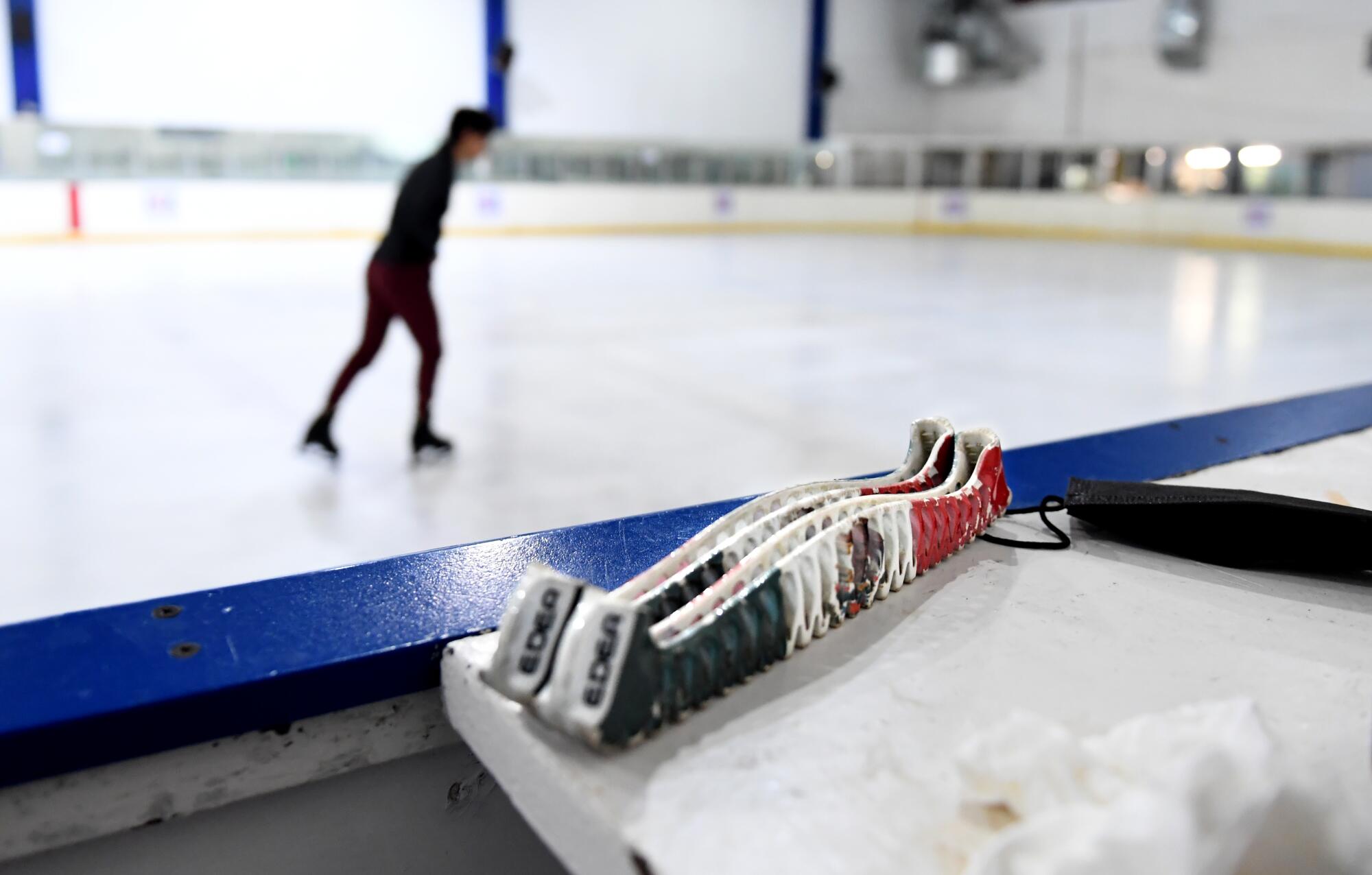
However, of all the deterrents, COVID-19 has been the most challenging. After rinks all over the country closed in the early days of the pandemic, Núñez ordered a jump harness from the United States and talked a local blacksmith into making a frame from which to hang it, allowing Carrillo to practice jumps and turns on dry land.
It proved to be one of the most important improvisations of Carrillo’s career because it forced him to break down his moves and focus on technique. When he returned to the ice four months later, he was a far better skater than when he left.
“I saw a lot of benefits working at home,” said Carrillo, who continues to train with the harness five to 10 minutes a day. “This actually helped me a lot with the quad because you have to be really under control when you’re jumping those jumps. Those are super hard and kind of dangerous.”
National champion Mariah Bell will be joined by Karen Chen and Alysa Liu on the U.S. figure skating team competing at the Beijing Olympics.
When COVID restrictions began to lift, he squeezed in about six months of training before qualifying for the world championships , then notched a personal-best score to place 20th in that competition last March to earn a spot in Beijing.
Now he’s headed to China with understandably modest goals that have nothing to do with medals. The men’s field will have a maximum of 30 competitors, with the top 24 qualifying for the 4-minute 30-second free program. Making that cut would make Carrillo the most successful winter Olympian in Mexican history.
But it won’t be easy. Despite his six top-10 finishes in major international events, he is ranked just 70th in the world by the International Skating Union, behind 13 Russians, nine Americans and seven Japanese.
Then there’s the fact no Mexican has stood on the podium at the Winter Olympics; four years ago in South Korea, the flag-bearer for the four-athlete Mexican team was Germán Madrazo, a 43-year-old triathlete from McAllen, Texas, who finished last in the 15-kilometer cross-country skiing race.
The country’s figure skaters have fared little better: the most successful of the three Olympians was Ricardo Olavarrieta, who in 1988 finished 27th in a 28-man field.
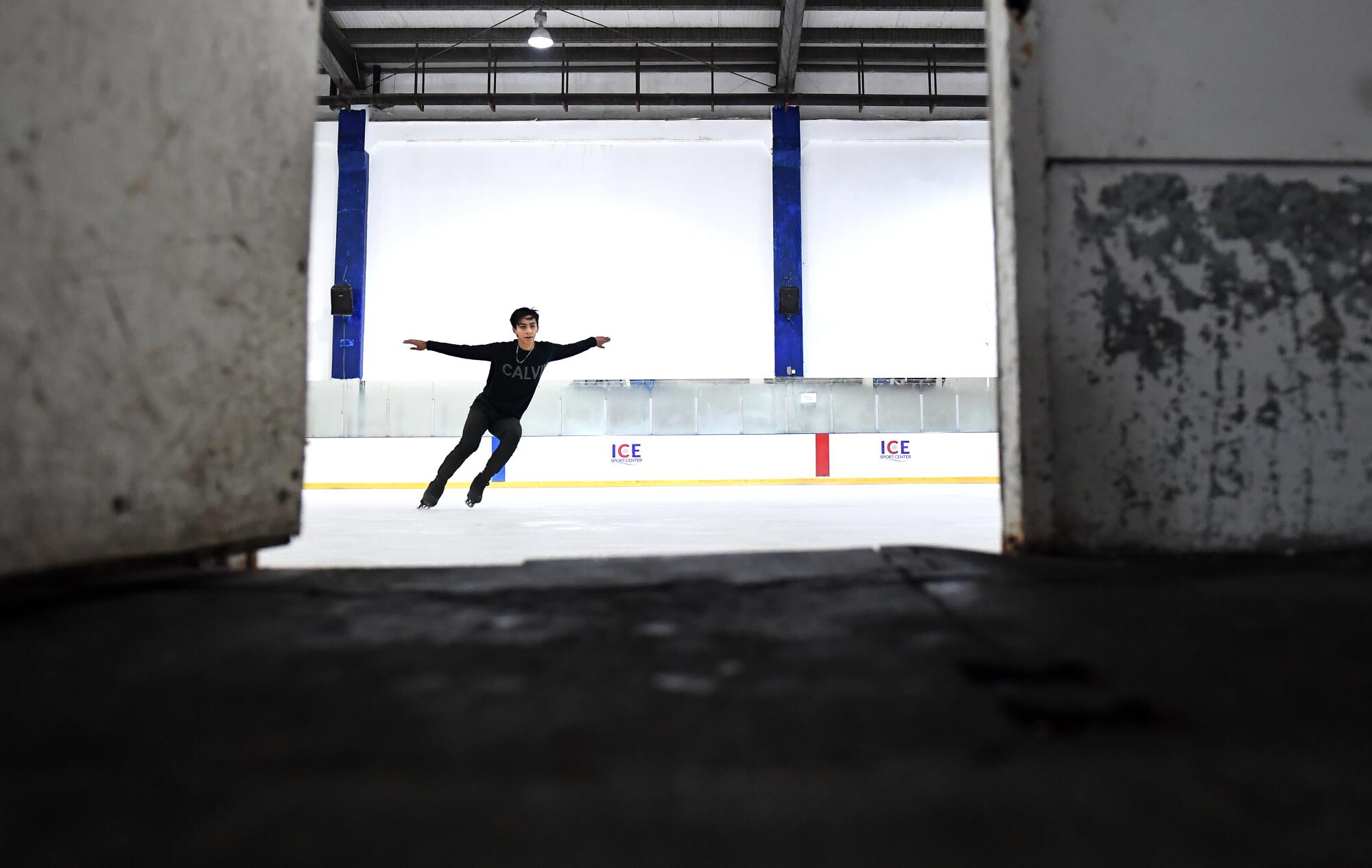
Even so, just qualifying for the Games places Carrillo among the standouts in the sport.
“Donovan has shown that despite how complicated it is, it is not impossible,” Núñez said. “When you dream something and fight for that something, and you believe in it, sooner or later life adjusts and you get that prize.”
And who knows? Perhaps in the near future he will go to a supermarket and everyone will be asking for his picture.
Watch L.A. Times Today at 7 p.m. on Spectrum News 1 on Channel 1 or live stream on the Spectrum News App. Palos Verdes Peninsula and Orange County viewers can watch on Cox Systems on channel 99.
More to Read
Go beyond the scoreboard
Get the latest on L.A.'s teams in the daily Sports Report newsletter.
You may occasionally receive promotional content from the Los Angeles Times.

